Brant: Death of Camilla
Annotations
Toward the middle of the image, Camilla has been hit in the chest with the spear thrown by Arruns [Arnus] (794-831). Arruns, to the right, has been hit in the chest by an arrow loosed by Opis, who stands at the top of the image framed by clouds (836-67). At the left and right edges of the image, Volscian and Rutulian soldiers flee the battle (868-75). In the upper left, people watch from the city. These are either soldiers who have fled the battlefield and locked themselves in the city (883-6) or women who mourn the death of Camilla. In the upper right corner, Turnus, who has received news of the dearth of Camilla, leads his men to the battlefield (896-902). Aeneas, shown here with Ascanius by his side, enters the field with his sword drawn, ready for battle (903-11).
Woodcut illustration from the “Strasbourg Vergil,” edited by Sebastian Brant: Publii Virgilii Maronis Opera cum quinque vulgatis commentariis expolitissimisque figuris atque imaginibus nuper per Sebastianum Brant superadditis (Strasbourg: Johannis Grieninger, 1502), fol. 387v, executed by an anonymous engraver under the direction of Brant.


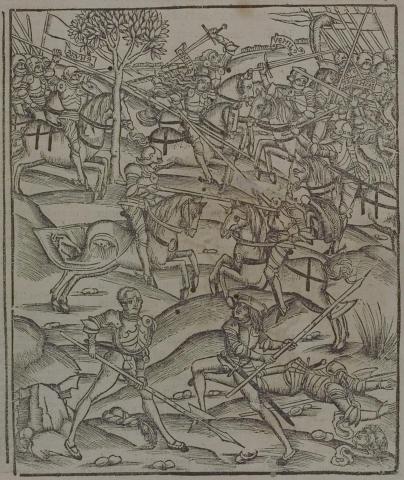
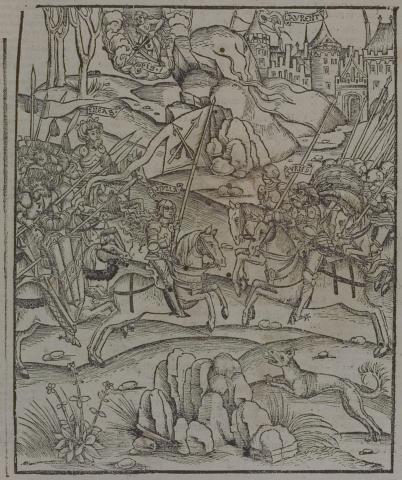
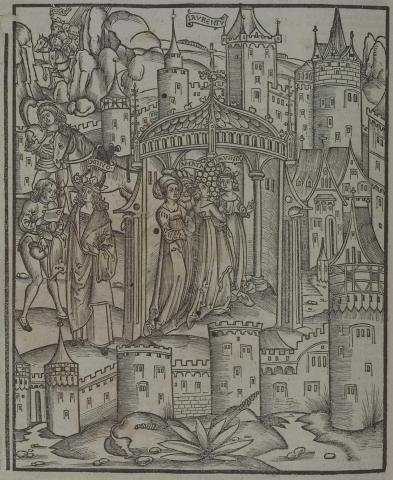
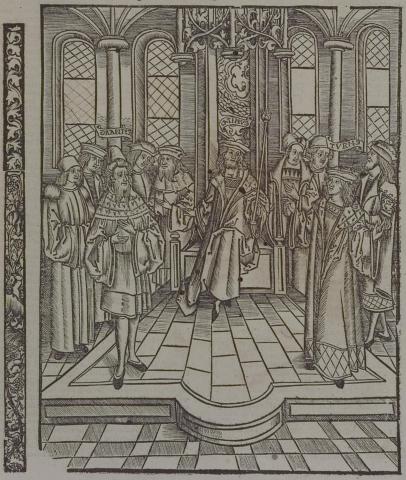
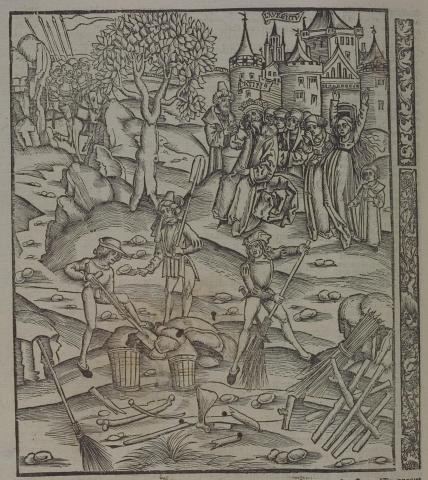
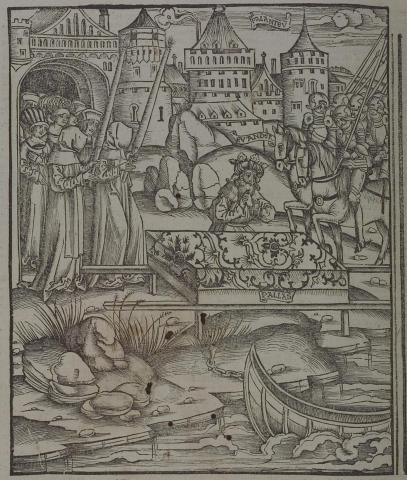

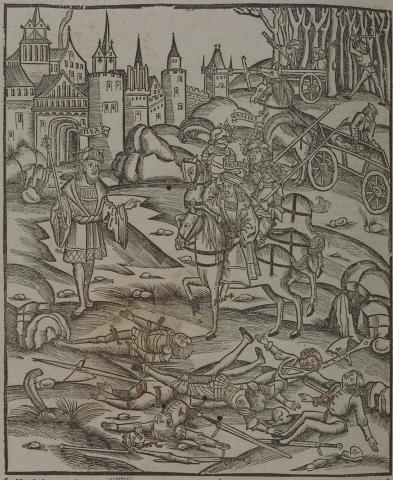
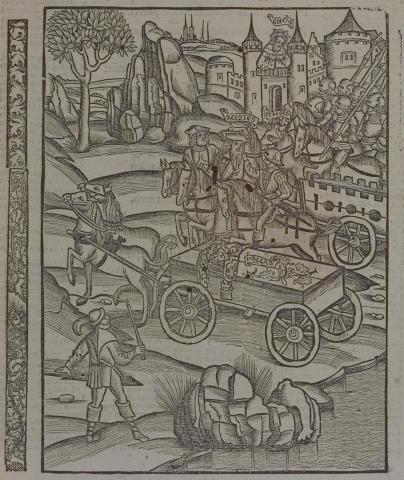
Sebastian Brant (1458-1521) was a humanist scholar of many competencies. Trained in classics and law at the University of Basel, Brant later lectured in jurisprudence there and practiced law in his native city of Strasbourg. While his satirical poem Das Narrenschiff won him considerable standing as a writer, his role in the transmission of Virgil to the Renaissance was at least as important. In 1502 he and Strasbourg printer Johannes Grüninger produced a major edition of Virgil’s works, along with Donatus’ Life and the commentaries of Servius, Landino, and Calderini, with more than two hundred woodcut illustrations. (Annabel Patterson)